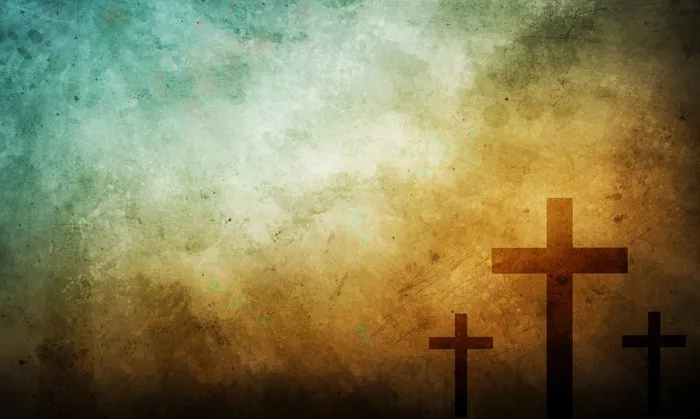Easter, one of the most significant Christian holidays, is celebrated worldwide with various traditions and symbols. Beyond its religious connotations, Easter embodies a rich tapestry of symbols that reflect both ancient customs and profound spiritual truths. From the ubiquitous Easter egg to the symbolic significance of the cross, each element contributes to the multifaceted meaning of this holiday. In this article, we delve into the symbolism of Easter, unraveling its layers of meaning and exploring its enduring relevance in contemporary society.
1. The Cross: Emblem of Sacrifice and Redemption
Central to the Easter narrative is the symbol of the cross, representing the crucifixion and resurrection of Jesus Christ. The cross serves as a powerful reminder of sacrifice, redemption, and the triumph of good over evil. Its vertical beam symbolizes the connection between heaven and earth, while the horizontal beam represents the reconciliation between humanity and the divine. For Christians, the cross is the ultimate symbol of hope and salvation, embodying the core principles of their faith.
2. The Resurrection: Triumph Over Death
At the heart of Easter lies the belief in the resurrection of Jesus Christ. This pivotal event, commemorated on Easter Sunday, signifies the triumph of life over death and the promise of eternal life. The resurrection symbolizes renewal, transformation, and the victory of light over darkness. It serves as a source of inspiration and comfort for believers, offering reassurance in the face of adversity and uncertainty. The resurrection narrative resonates across cultures and religions, serving as a universal symbol of hope and renewal.
3. The Easter Egg: Symbol of New Life
The Easter egg, perhaps the most recognizable symbol of the holiday, carries deep symbolic meaning across different cultures. Originating from pagan traditions, eggs have long been associated with fertility, rebirth, and renewal. In Christian symbolism, the egg represents the tomb from which Jesus emerged after his resurrection, symbolizing new life and the promise of salvation. The tradition of decorating eggs dates back centuries, with intricate designs and vibrant colors symbolizing the joy and abundance of Easter.
4. The Easter Bunny: Messenger of Spring
The Easter bunny, a beloved figure in popular culture, has become synonymous with the holiday festivities. Originating from German folklore, the Easter bunny symbolizes fertility, abundance, and the arrival of spring. According to tradition, the Easter bunny delivers colorful eggs and treats to children, spreading joy and cheer during the holiday season. While its origins are rooted in pagan customs, the Easter bunny has become an enduring symbol of Easter celebrations around the world, embodying the spirit of renewal and new beginnings.
5. Spring Flowers: Symbolism of Renewal
Spring flowers, such as lilies, daffodils, and tulips, play a significant role in Easter celebrations, symbolizing rebirth, renewal, and the promise of new life. Lilies, in particular, hold special significance in Christian symbolism, representing purity, innocence, and the resurrection of Jesus Christ. Their delicate petals and sweet fragrance evoke the beauty and splendor of Easter, serving as a visual reminder of the transformative power of the season.
6. The Lamb: Symbol of Sacrifice and Redemption
In Christian tradition, the lamb is a powerful symbol of sacrifice and redemption, closely associated with the story of Jesus Christ as the “Lamb of God” who takes away the sins of the world. The imagery of the lamb underscores the theme of atonement and the ultimate sacrifice made for the salvation of humanity. During Easter, the lamb serves as a poignant reminder of Jesus’ sacrificial death and the promise of redemption for all who believe.
7. The Paschal Candle: Light in the Darkness
The Paschal candle, lit during the Easter Vigil, symbolizes the presence of Christ as the light of the world. Its flame represents the resurrection and the triumph of light over darkness, dispelling the shadows of sin and death. The Paschal candle serves as a beacon of hope and guidance for believers, illuminating their path with the eternal promise of salvation. Its symbolism resonates deeply within Christian tradition, emphasizing the transformative power of faith and the enduring light of Christ.
8. The Empty Tomb: Symbol of Victory
The empty tomb is a powerful symbol of Easter, representing the resurrection and victory of Jesus Christ over death. According to the Gospel accounts, the tomb where Jesus was laid after his crucifixion was found empty on the third day, signaling his triumphant return to life. The empty tomb serves as a testament to the transformative power of Easter, inspiring believers to embrace hope, faith, and the promise of new beginnings. Its symbolism resonates across generations, reminding us of the enduring significance of the Easter story.
Conclusion
Easter is a time of reflection, celebration, and renewal, encompassing a rich tapestry of symbols that resonate deeply within Christian tradition and beyond. From the cross, symbolizing sacrifice and redemption, to the Easter egg, representing new life and rebirth, each symbol carries its own unique significance, weaving together the intricate narrative of Easter. As we commemorate this sacred holiday, let us embrace the symbolism of Easter, finding meaning and inspiration in its timeless message of hope, renewal, and the triumph of life over death.

